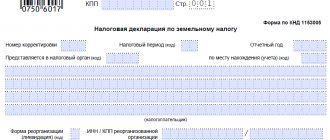The enterprise profitability indicator EBIT (Earnings Before Interest Tax) or operating profit is an analytical indicator equal to the volume of profit before interest on borrowed funds and taxes.
This indicator is intermediate between gross profit and net profit. Subtracting interest and tax payments allows you to abstract from the capital structure of the enterprise (share of borrowed capital) and tax rates.
The formula for calculating the enterprise profitability indicator (EBIT) is:
EBIT = Revenue - Operating Expenses + Non-operating Income
EBIT = Revenue - Operating Expenses
or the formula for calculating EBIT can be presented as:
EBIT = Profit (loss) before tax + interest payable
It should be borne in mind that the cost price must be reduced by the amount of expenses for paying interest on loans and borrowings included in the cost price.
It is worth keeping in mind that the EBIT ratio , like the EBIDTA indicator, is not reflected in financial statements according to Russian standards, so the approximate calculation formula for the indicator (according to Russian standards) looks like this:
EBIT = Profit from sales (line 050 f. No. 2) + Interest on loans and borrowings included in the cost
EBIT = Profit (loss) before tax (line 2300) + Interest payable (line 2330)
Balance sheet profit is...
The level of profitability has a direct impact on the amount of tax liabilities of the organization. The concept of “balance sheet profit of an enterprise” contains the summed up income from the main production processes. The value can be positive or negative. In the latter case, we will be talking about unprofitable activities.
The balance sheet profit of an enterprise is determined as the taxable base. If an error (even an insignificant one) is made in the process of deriving its final result, then for an economic entity this means an increased risk of a dispute with the fiscal authorities. Based on the results of an audit by the tax inspectorate, organizations will be fined for unreliable information and underpayment (overpayment) of tax.
Balance sheet profit can be obtained if expenses incurred are subtracted from the total volume of proceeds in monetary terms. Accrued taxes are not included in the cost group. The company's balance sheet profit includes:
- profit received from the sale of the company's main product (goods or services);
- financial result, determined after completion of operations on the sale of property, provision of it for temporary use to third parties on a paid basis;
- results of non-operating actions (from currency conversions, income from investment projects).
Balance sheet profit consists of profit from sales of main products with the share of this indicator at 80%. When calculating the profit value, accounting accounts 90 and 91 are used. The result of the accumulation of funds on them and write-off at the end of the year is reflected in account 99. The turnover in account 99 should be equal to the level of book profit for the same period of time.
The concept of “balance sheet profit of an enterprise” includes various types of income, reduced by expenses incurred in the course of the company’s activities. Turnovers and balances on the following accounts are not taken into account:
- 68, showing the volume of tax liabilities;
- 84 regarding the final revolutions on it.
Definition
Profit (loss) before tax 2300 is the difference between all the organization’s income (from core activities and from other activities) and all its expenses, but before this difference was taxed.
This is the profit (loss) from sales to which income from participation in other organizations and interest receivable were added, then interest payable was subtracted, then other income was added and other expenses were subtracted.
This indicator reflects the effect obtained from the conduct of all activities of the organization.
If the indicator is positive, then the entire activity has made a profit, if negative, then there is a loss.
Balance sheet profit: calculation formula
You can derive the values of the balance sheet indicator of profitability of activities using data from balance sheets or information from financial statements. The balance sheet profit formula takes into account the following elements:
- Profit, the result of which is received after the sale of goods (Prt).
- Profit generated as a result of the sale of property owned by the enterprise (Note).
- Profit that was generated from funds from non-operating income (Prvnereal).
How is book profit calculated:
Prt is defined as the difference between gross income from sales operations and the cost of production. Prim is calculated by reducing the proceeds from the sale of assets by their residual value and expenses that were incurred by the organization in the process of carrying out the transaction for the sale and delivery of the object to the buyer.
Balance sheet profit - a formula based on the balance sheet or account turnover allows you to calculate the percentage indicator of profitability of the costs incurred. To do this, you need to divide the derived numerical value of profit by the amount of expenses for the product groups sold. The last step is to convert the coefficient into percentages.
Balance sheet profit includes the following indicators from the Form 2 report:
- revenue indicated by line 2110;
- generated actual cost in full, taking into account management and commercial expense transactions;
- amounts of other income;
- amount of other costs.
There is no formula for balance sheet lines. According to the financial statements, it can be derived on the basis of the statement of financial results (Form 2) according to the following scheme:
- line 2110 – (sum of lines 2120, 2210, 2220) + line 2340 – line 2350.
Conclusions about what a change in indicator means
If the indicator is higher than normal
Not standardized
If the indicator is below normal
Not standardized
If the indicator increases
Positive factor
If the indicator decreases
Negative factor
Notes
The indicator in the article is considered from the point of view not of accounting, but of financial management. Therefore, sometimes it can be defined differently. It depends on the author's approach.
In most cases, universities accept any definition option, since deviations according to different approaches and formulas are usually within a maximum of a few percent.
The indicator is considered in the main free online financial analysis service and some other services
If you need conclusions after calculating the indicators, please look at this article: conclusions from financial analysis
If you see any inaccuracy or typo, please also indicate this in the comment. I try to write as simply as possible, but if something is still not clear, questions and clarifications can be written in the comments to any article on the site.
Best regards, Alexander Krylov,
The financial analysis:
- Absolute economic indicators of an enterprise's activity Absolute economic indicators of an enterprise's activity are indicators that allow us to judge several things: The size of the enterprise and the scale of its activities The level of income and expenses...
- Key performance indicators of an enterprise Key performance indicators of an enterprise are indicators that allow us to judge several things: The size of the enterprise and the scale of its activities The level of income and expenses About ...
- Relative economic indicators of the enterprise’s activity Relative indicators of the enterprise’s activity are indicators that allow one to judge the efficiency of work. The initial data for the preparation of such indicators can be taken from the balance sheet and report on ...
- V. CURRENT LIABILITIES Section V. Current liabilities is the fifth section of the balance sheet. At the same time, it is also the third section of the liability side of the balance sheet, which shows the sources of financing for the property. AND…
- Balance sheet liability The balance sheet liability is the second part of the balance sheet. It contains a list of those financial resources that were used to acquire property, that is, assets that...
- III. CAPITAL AND RESERVES Section III Capital and Reserves is the third section of the balance sheet. But what is more important is the first section of financial sources, that is, the liability side of the balance sheet. By this he...
- I. NON-CURRENT ASSETS Non-current assets are property used in the activities of an enterprise for more than a year. Its value is transferred in parts to the cost of finished products. A sign of assets is the ability to generate income for the organization.…
- Horizontal and vertical analysis of the balance sheet and income statement (profit and loss) Good afternoon, my dear reader. In this article we will consider such a topic as horizontal and vertical analysis of the balance sheet and financial results statement (income and...
- IV. LONG-TERM LIABILITIES Section IV. Long-term liabilities are the fourth section of the balance sheet. At the same time, it is also the second section of the liability side of the balance sheet, which shows the sources of financing for the property. AND…
- II. CURRENT ASSETS Current assets are property used in the activities of an enterprise for less than a year or used in one production cycle, which also does not exceed one year. Its entire cost...
Balance sheet profit of the enterprise in reporting
Accounting statements reflect all performance indicators of companies. It allows you to assess the degree of success of a business project, calculate its profitability and prospects. The line in the balance sheet for book profit is not highlighted. The report shows the value of the profit remaining after deducting from it all types of costs and tax liabilities.
The reason for the impossibility of identifying the value of balance sheet profit according to the balance sheet reporting form is the different approach to reflecting the results of operations. The balance sheet is compiled on the basis of the ending account balances. Balance sheet profit must be calculated based on information generated cumulatively. The calculation can be made based on the balance and data from accounting registers. To do this, the amount of income tax paid during the year must be added to the retained earnings from the balance sheet line under code 1370.
Balance sheet profit is a line in Form 2, corresponding to the code designation 2300. If the company has a loss instead of a profit, then in the column with code 2300 its value is indicated without a minus, but the number is taken in parentheses.
How to Determine Gross Profit
Gross profit is the total difference between the actual revenue of a business or organization and the cost of goods or services.
The English abbreviation for gross profit is COGS (“cost of sold goods”).
Gross profit and operating profit are different concepts. The second includes the amount before payment:
- Income tax.
- Fines.
- Credit payments.
- Peneus.
Gross profit is calculated as net income minus the cost of goods.
What kind of reporting do NPOs submit to the Ministry of Justice?
Use of the obtained financial result
In financial calculations, there are several basic concepts called absolute. These terms include the aforementioned EBIT, EBITDA, net profit and operating profit.
The obtained result clearly shows where the company could save, where it took out an extra loan, and where it would not hurt to add funds and invest in development so that income increases in the future.
All data must be entered into the Report, which also stores information about the amount accumulated by the enterprise for the entire period of operation. Despite the seemingly extreme clarity of the term “profit” itself, in practice a huge number of controversial situations arise when it is unclear whether a particular payment is included in the calculations.
The concept of profit before tax
Profit is the main result of the activities of any commercial organization.
Its size shows how efficiently the company operates and how much its products or services are in demand in the market. But this value exists in several expressions - before and after taxes. In this material, we will consider the first option - before taxes. Operating profit is the profit that an enterprise receives after deducting all non-production expenses from gross income (all money earned). Another name for it is operating or balance sheet profit. In English, this term sounds like EBITDA or EBT. In modern economic literature, these concepts are also used quite actively.
Line on the balance sheet - 99 “Profits and losses”.
Income before taxes is calculated as the difference between marginal or gross profit and the organization's incidental expenses (not related to the main activity). This is the money earned before deduction:
- all taxes;
- fines and penalties on them;
- loan payments.
Operating profit is of fundamental importance for understanding the efficiency of the entire enterprise as a whole. Its size and dynamics show whether the organization is operating successfully, whether all internal processes are structured correctly, whether the product is in demand on the market, and the profitability of the activity as a whole.
It is equally important that book income is used to calculate net profit - the company’s final income, which it will receive after fulfilling all obligations to the budget.
Profit before tax is calculated as the difference between gross profit and non-production expenses
Determination of net profit
Net profit is the share of funds received by an enterprise or organization that remains at the free disposal of the company. It remains after all necessary deductions for taxes, credits and expenses have been made and accounted for.
The concept of net profit is often confused with economic profit, but this is absolutely forbidden. Net profit refers to those incomes that go to the benefit of the enterprise and are used for: investing in fixed assets, investing in the company's turnover, necessary reorganization. From which reserve funds are created and funds for circulating production are increased.
Net profit is calculated as follows:
Income Tax Expense – Income Tax Recovered + Extraordinary Expenses – Extraordinary Revenues + Interest Paid – Interest Received. The result is an amount equal to EBIT, which stands for “earnings before interest and taxes.”
If you add depreciation deductions to the resulting amount and subtract the revaluation of assets, you get the EBITDA value. This indicator is used to level out the impact of income tax payments, borrowed funds and non-current assets.









